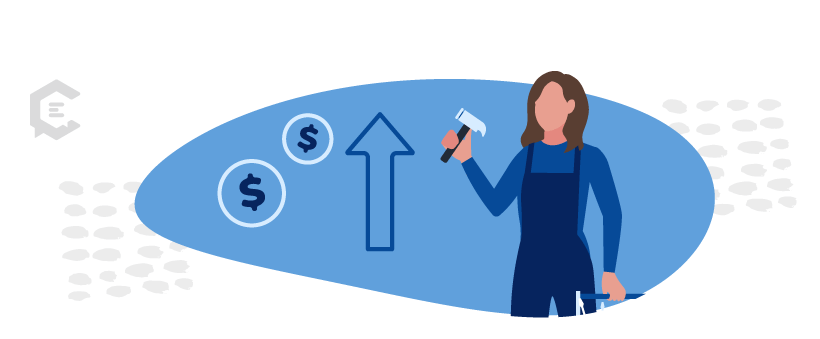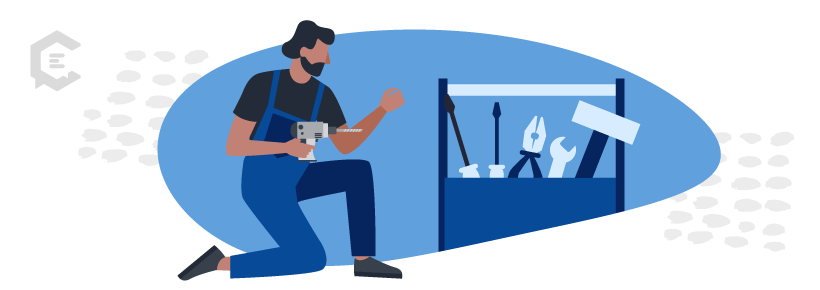What is the IKEA Effect? The IKEA Effect— so dubbed in 2012 by a team of researchers from Duke, Harvard, and Tulane — is a cognitive bias where people value products they self-create (or participate in creating themselves) more than identical products created by others.
Can you use the IKEA Effect to charge more?
You’ve likely heard a lot of jokes about IKEA. Some go like this:
- Thor, Iron Man, and Hulk walk into IKEA. Avengers… Assemble!
- Don’t ask me why your IKEA furniture isn’t holding up, you only have your-shelf to blame.
- I bought a shelf at IKEA. Took me all day to put the Fjälkinge thing together.
- What does a person obsessed with IKEA suffer from? Stock-home Syndrome.
Funnily enough, comedians aren’t the only ones poking at the Swedish furniture store. Consumer psychologists who study how people make decisions when spending their money have also looked at IKEA’s business model and discovered a few interesting things.
Does the IKEA Effect influence how much consumers are willing to pay?
This blog series aims to dive into behavioral science findings so marketing and content creators can create nuanced marketing materials, based on evidence-based consumer psychology.
Published in the International Journal of Research in Marketing back in 2012, Daniel Mochon, Michael Norton, and Dan Ariely tested a hypothesis they dubbed the IKEA Effect. One of the experiments they ran went like this: Volunteers were given either a preassembled Lego car or some Legos and a set of instructions and told to put it together. Afterward, researchers asked: How much would you pay to keep your Lego car?
“The students might be willing to pay twice as much money to buy the exact same Lego car if they just finished building that Lego car than if the Lego car was given to them prebuilt,” Mochon said in a Hidden Brain podcast episode. “People use self-made products as a way to signal competence to both themselves and to others.”
Crazy, right? From a rational economics standpoint, the logic of that purchase is a bit wobbly, a bit Stockholm Syndrome-ish. Yet many businesses also offload the costs of assembling onto their consumers too.
- If you watch Ryan’s World at Build-a-Bear Workshop, you can see the excitement in Ryan’s eyes as he customizes a new bear. For your basic bear, prices start at $15 to $25, and that’s before you’ve added any customized accessories.
- At the Droid Depot at Star Wars: Galaxy’s Edge, you can assemble a Custom Astromech Droid Unit with lots of different parts and functions starting at $100. But it might be better if Disney built a chatbot for the droids, similar to the one Disney built to promote ‘Zootopia’ with a Facebook Messenger chatbot that interacted with children.
- Or you can make a custom lightsaber at Savi’s Workshop, where prices for your handbuilt lightsaber start at $219.
Are all these workshops playing off the same psychology produced by the IKEA Effect?
Here’s what Mochon says: “There’s actually psychological benefit behind this, that actually people might end up liking their furniture more because they built it. And so, it’s not so much a cost but a benefit that they get to build their own furniture.”
Similar to the IKEA Effect, the Endowment Effect, another cognitive bias, goes by the maxim: If you own it, you give it greater value. For the IKEA Effect one might say: If you built it, you’d be willing to pay twice as much for it. As Mochon puts it: “We’ve come to overvalue the things that we’ve created ourselves.”
In terms of consumer behaviors, other studies showed a few more pitfalls of the IKEA Effect:
- People are willing to fork over extra cash for experiences that require them to put in some sweat equity.
- The maker-buyer will have a skewed view of how well a job they did, so getting impartial feedback might be useful.
- DIYers might think they are saving money without weighing the cost of their time, labor, and sanity.
- The materials might be less expensive upfront, but also be lower quality and have a shorter product life span.
How can content creators use the IKEA Effect?
For content creators, writing for products that induce the IKEA Effect can mean creating and maintaining the story world of the customer experience.
Here are some examples:
At the Disneyland site for the Droid Depot, marketing materials treat patrons as if they are a character or person living in ‘Star Wars.’ Most certainly, the website establishes the brand’s voice. The jokes, the asides, and all texts maintain the story world, while also mimicking the real world.
Here’s a fresh line from the site:
“Whether heading to the far corners of Wild Space or wandering around Star Wars: Galaxy’s Edge, be sure to bring your personal droid — it’s the ultimate travel companion for all your Outer Rim adventures!”
At IKEA’s website, the “Do-it-yourself” products boost a buyer’s sense of self-efficacy, giving him/her/them a sense of feeling good in the moment, and fulfills a deep psychological need. IKEA’s website is high on photos of products and sparse on text, but it certainly places a high premium on making you feel good.
As this snippet reads:
“Playfully yours: spaces where kids feel at home. Looking for a just-right mix of fun and function? Here’s a few ways to make your home equally playful and practical for the little ones in your life.”
In summary, the IKEA Effect shows consumers are not completely rational creatures when it comes to paying more for what they’ve built. The experience of building something can have a benefit that is worth more than the cost, so marketing content that maintains the feeling of this experience works well.
Need help getting consumers to see the value of your products or services? ClearVoice’s talented team of writers can craft expert copy that inspires trust, engages your target audience, and persuades them to take the desired action. Talk to a content specialist to learn more.





